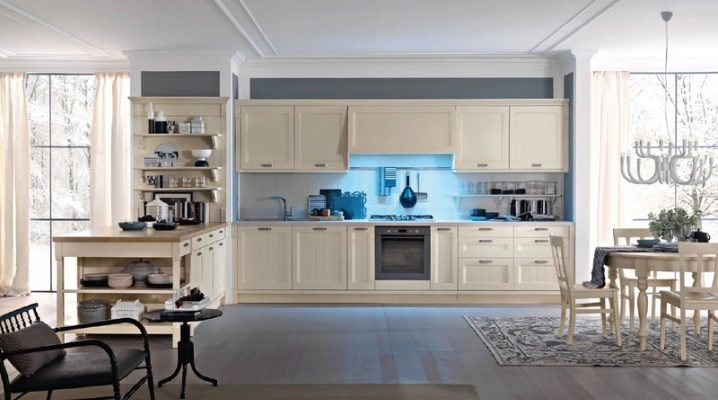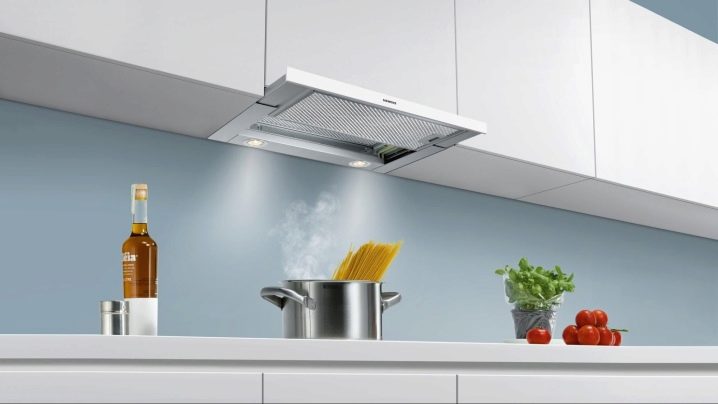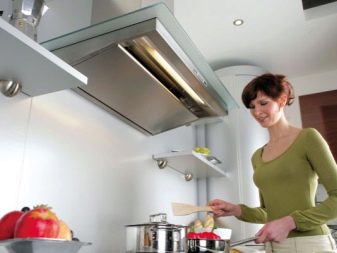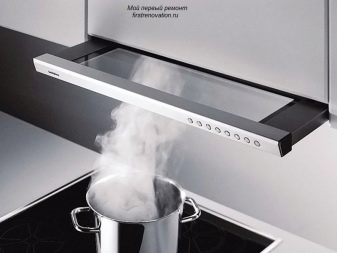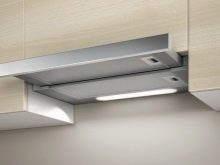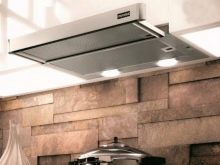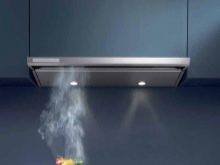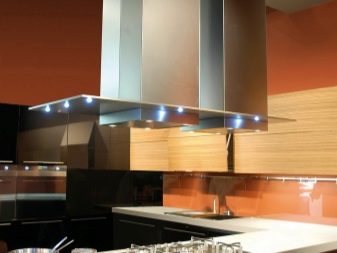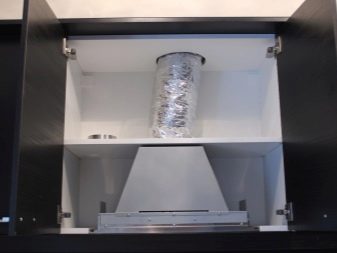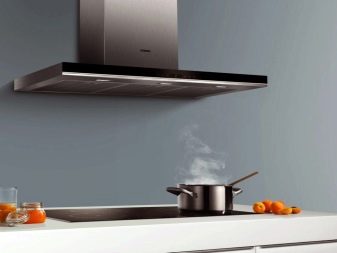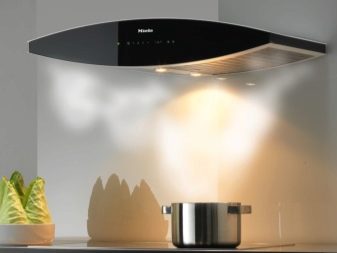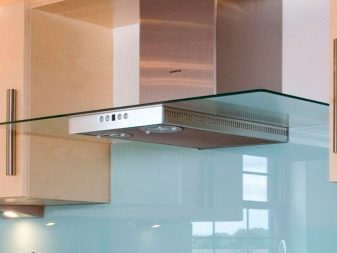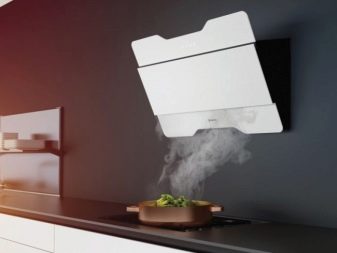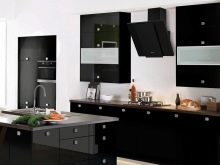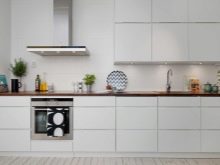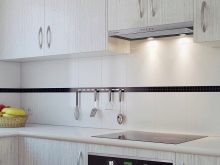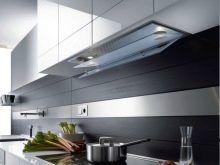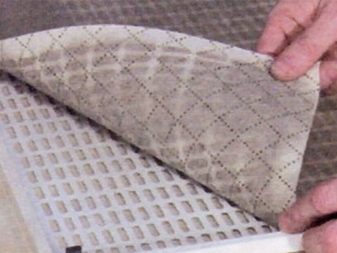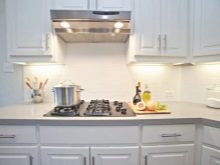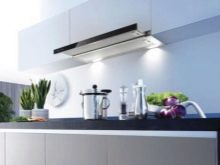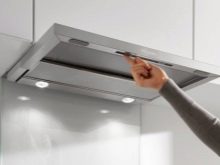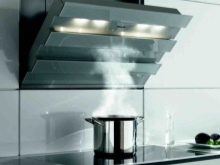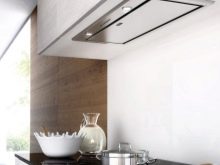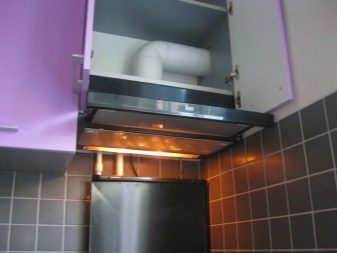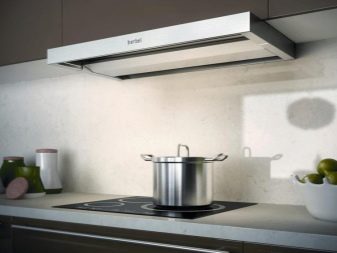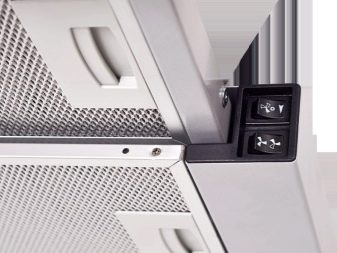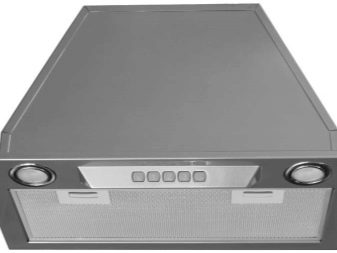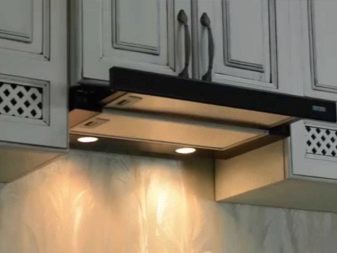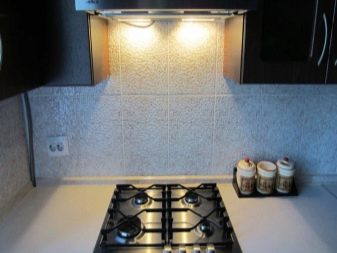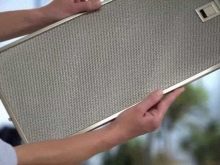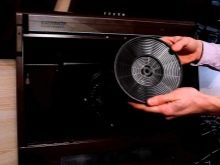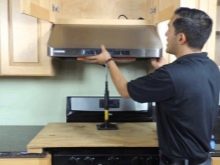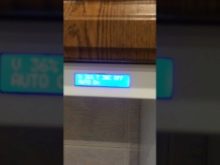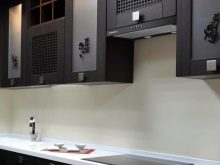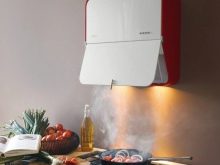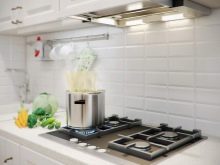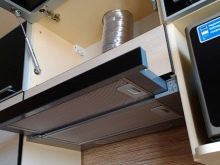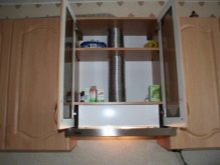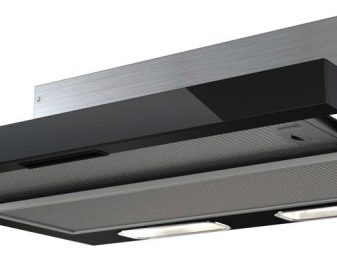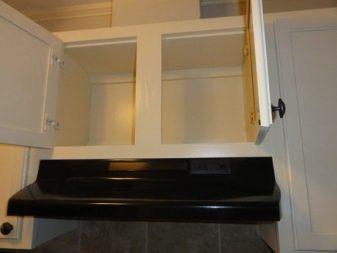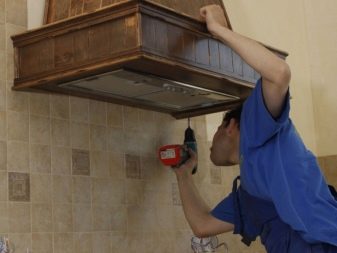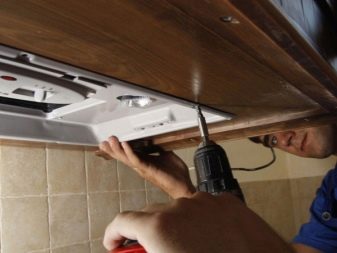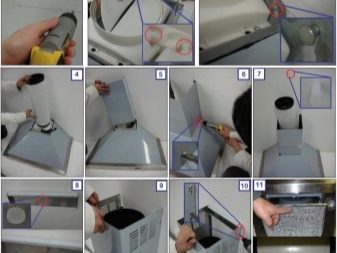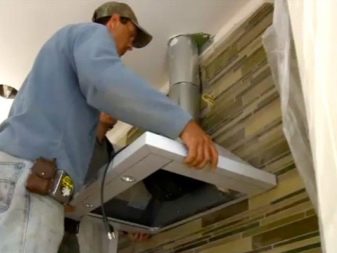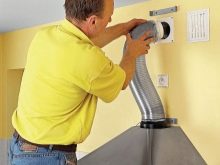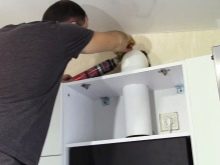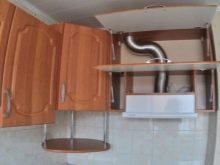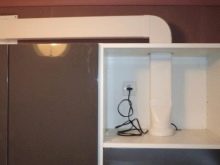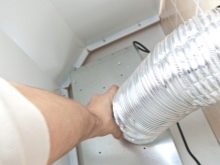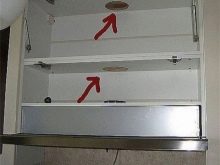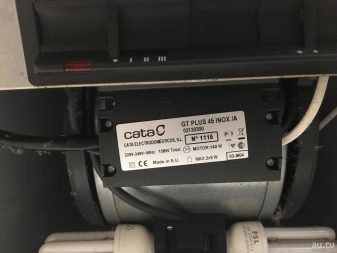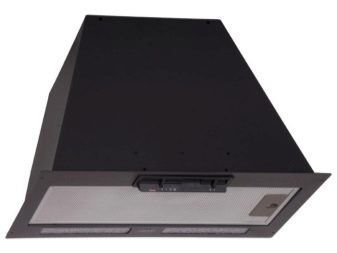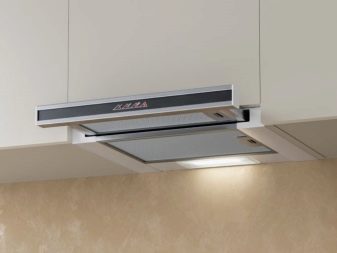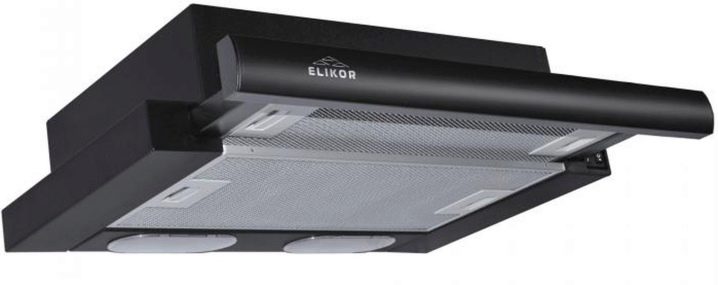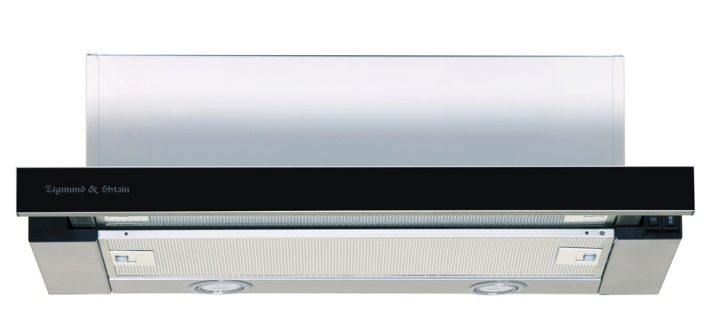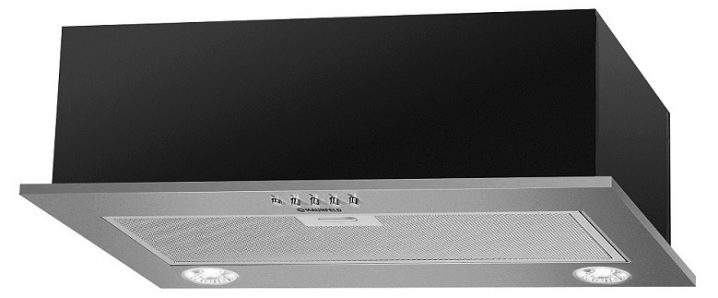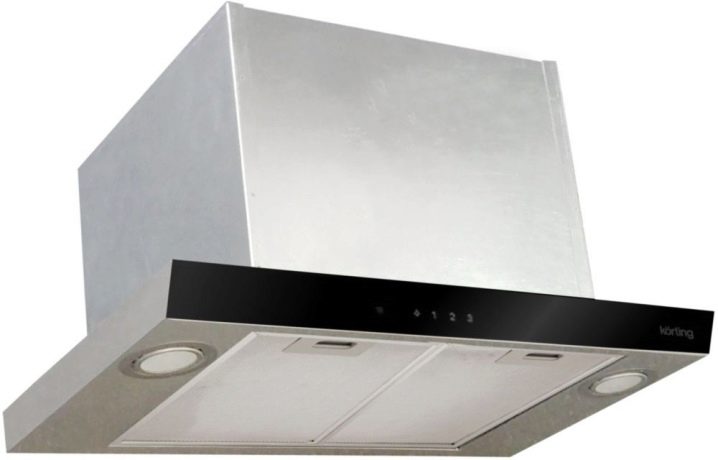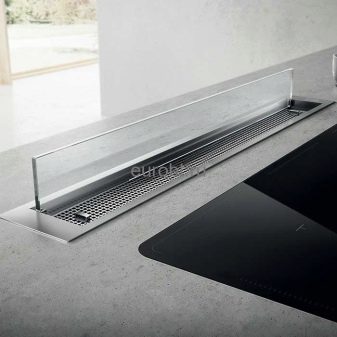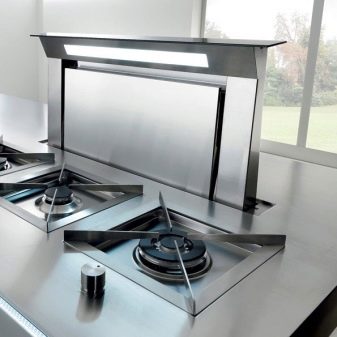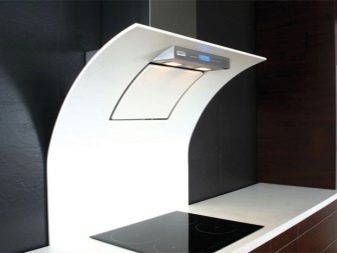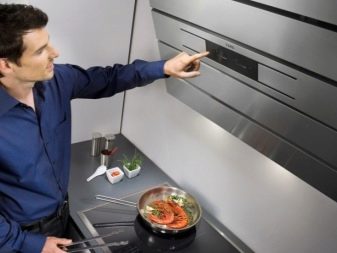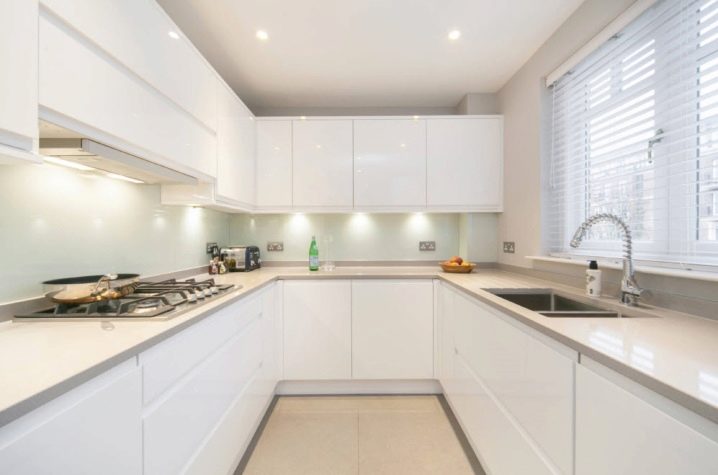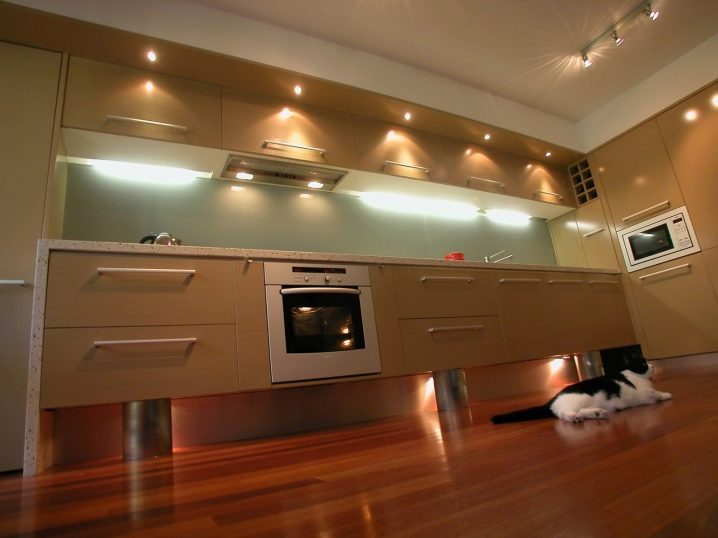Built-in hood: tips on choosing and installing
Embedded household appliances can significantly save space and make the interior much more concise. No exception is the premise of the kitchen. Kitchen hoods have recently become very popular, because this device cleans the air, eliminates odors that occur during the cooking process. This hood can be built-in, which will allow not to spoil the interior of the kitchen with a bulky, visually distinguished structure.
Characteristic
Undoubtedly, the smell of delicious homemade dishes brings comfort to the atmosphere of a house or apartment. However, with constant and frequent cooking, this smell often fills almost all the rooms. It literally soaks the pieces of furniture closely spaced from the stove, kitchen curtains, wallpaper.Soot from boiling foods and liquids, as well as small particles of fat over time, cover the plate itself, adjacent tables and walls. Fat stains are a good nutrient medium for the development of mold microorganisms and bacteria.
Daughter clean wash such pollution is not so simple. Housewives often have to do the cleaning. In this case, you need to use various cleaning products and spend a lot of effort to clean kitchen surfaces. But the most unpleasant thing is that after a while soot, evaporation, grease and odors again accumulate on objects and furniture in the kitchen.
One of the sayings reads: "It is not clean where it is often cleaned, but where it is not littered." You can transfer the essence of this phrase to the above problem. Then it turns out that it would be necessary to somehow reduce or completely eliminate the formation and accumulation of contaminations that occur during cooking on the stove.
For the purification of air in the kitchen for many years, special hoods have been used. Recently, they have become particularly popular.
This ventilating device is installed above the kitchen stove (gas or electric).Taking in the air, the hood catches and draws in steam, soot, and particles of fat that are formed during the preparation of hot dishes. Thereby pollution and odors do not spread through the kitchen.
According to the principle of air ventilation, there are the following types of hoods:
- Flow exhaust systems. This is a simpler version of the ventilator. The polluted air taken from the kitchen passes through the filters and is led out of the room to the street. These hoods are built into the ventilation system of an apartment building, or they have direct access to the street through the wall. The hood is equipped with built-in carbon filters. They are designed to delay soot and fat. Such contaminants can accumulate in the vent pipe of the ventilation system and eventually clog it or significantly reduce air cravings.
- Recirculating hoods. Such an air cleaning system filters air masses, cleans them and returns them back to the premises. This hood has a much larger number of filtration systems. In addition to the delay in soot and fumes, the system cleans odors from the kitchen air.Filter elements in such a ventilating structure are subject to periodic replacement. Such hoods are much more convenient for use during the cold season, since air recirculation significantly reduces heat loss.
Also, the hood can be open or embedded.
The first type of air cleaning structures is an aggregate located above the surface of the plate. It consists of a catching flat or dome element and a pipe for exhausting air masses. The air exhaust pipe, in turn, is connected to the ventilation system. All design elements are not closed.
Built-in hood is partially or completely hidden from the eyes and does not attract attention. Catching mortise surface is fixed in the bottom table top wall cabinet above the stove. The main elements of the structure remain hidden behind the doors. The catching air intake plate is visible only if you look directly under the wall cabinet. Sometimes visible remains a small section of the exhaust pipe.
A fully vented design is also mounted in furniture. All its parts are hidden from view.
It is worth saying a few words about the filters used in modern kitchen hoods.
For the most part, they are divided into two types and perform two main functions:
- Carbon filterwhich is in all types of ventilation units. It works to eliminate odors and delays soot and greasy dirt. The filter element should be replaced during operation as the accumulation of dirt in it.
- Non-woven and sinteponovye filters capture and retain in themselves the products of combustion, evaporation from boiling liquids, soot, greasy and oily particles. Cassettes with these filter elements can be plastic or steel.
Plastic cassettes (they are most often produced by manufacturers in recent times) need to be replaced as dirt accumulates in them. Steel or aluminum filter cartridges need to be cleaned periodically.
The dimensions of the exhaust depend primarily on the dimensions of the working surface of the gas or electric stove. Also, the size of the entire filtering unit is affected by its power, a set of functions and the degree of purification of air masses.
Advantages and disadvantages
The popularity of kitchen hoods in recent years is not without reason. Often, customers even purchase quite expensive, but multifunctional cleaning systems.
After all, the installation of built-in ventilation equipment in the kitchen has a lot of positive aspects:
- Aesthetic appearance, saving space. The whole construction of cleaning and filtering is almost invisible in the interior of the room. The ventilation unit is simply built into the furniture that matches the style of the kitchen.
- Disposal of odors during cooking. The aroma of ready-made dishes is often very pleasant, but it can literally eats into furniture over time. It is not particularly good when kitchen smells fill other rooms in an apartment and linger there for a long time. Moreover, in the process of cooking, quite unpleasant aromas are often formed (for example, in the first minutes of boiling fish or meat).
- Trapping soot, fumes, grease particles from the air above the stove. This virtually eliminates settling and accumulation of pollution on the stove itself and surrounding objects or walls, which, in turn, improves the sanitary condition of the kitchen and eliminates the need for very frequent and labor-intensive cleaning.
- Ensuring an intensive inflow of fresh (in the case of using flow-type ventilation) or purified (during recycling) air into the room.
The disadvantages of embedded extracts include the following points:
- The relative high cost of some multi-functional models. Especially hit the hood exhaust with a large number of filters and features especially thorough air purification.
- Some difficulties may be caused by the selection of a ventilating structure to a plate of a non-standard size. In case of discrepancy of dimensions, select the hood, which will be wider, and not already the size of the surface of the plate.
- Units designed for large rooms are often quite noisy. Especially this disadvantage becomes noticeable during intensive work in the maximum filtering mode.
- When working exhaust with a direct type of air exhaust (on the street) in the cold season there may be heat loss from the room.
- Because of their relative compactness, recessed ventilators are often inferior in power to standard open models.
Functionality
Next will be considered the functions and capabilities that most often provided with recessed hoods. Each particular model, of course, the set of functionality will be different. It is worth getting acquainted with the main and most common of them. This will help you choose a suitable hood and do not overpay for possibly unnecessary additional features and capabilities of the unit.
Very useful may be the ability to adjust the power of the ventilation unit. If cooking takes place on several burners, more intensive ventilation will be required. And if eggs boil on one of the burners over low heat, high filtration power is not required at all. This feature will significantly save energy consumption, as well as reduce the workload on the hood itself.
The backlight function is recently present in most models. She allows to light a working surface of a plate during cooking. Built-in lights can be of different power and different color spectrum. For the general interior of the kitchen is not such a small parameter.
The presence of a quiet mode of operation in some cases may be important. Usually the noise level from the operation of the ventilation unit does not exceed 55-60 decibels. But with high power models, intensive ventilation can be quite noisy. The presence of "quiet mode" allows you to reduce the sound load when working hood.
When buying it is worth knowing that the exhaust with recirculating type of ventilation is significantly more expensive, including in the process of maintenance. Units of this type return the air back into the room, and this requires a much more thorough cleaning. Therefore, several filters are installed in these hoods. During operation, most of them require periodic replacement.
The presence of a removable facade allows you to replace it with a suitable color for your kitchen. If the store does not have an exhaust hood with a suitable front panel, you can later purchase it separately and replace it with the previous one.
Most models of kitchen hoods are equipped with indicators of filter pollution. In the event of its operation, it is necessary to clean or replace the filter element.However, there are still models where there is no such indicator. In this case, one has to be guided by intuition regarding the degree of contamination of the filters. And this is not very convenient and often inefficient.
The presence of automatic functions of the regulation of the operation of the ventilation unit can also be very useful. True, so far a rather expensive model has a set of such functionality. The most common and useful are, for example, the function of automatic power adjustment of work, turning on the backlight when a person approaches the stove, automatic activation of ventilation when temperature sensors and air purity analyzers are triggered.
How to choose?
When buying in the first place it is worth bearing in mind that each hood is designed for a certain area of the room. It will be ineffective if its power is insufficient. A too strong extractor will, for the most part, be idling in a small kitchen.
Therefore, immediately familiarize yourself with the size of the room recommended for this model. Experts advise to choose an extractor hood, in which the declared area of the room is 10-15% larger than the size of your kitchen. This will create a safety net and reduce the load on the unit.
Earlier in the article was mentioned such a parameter as the dimensions of the catching plate built-in hood. This size should be equal to or slightly larger than the dimensions of the surface of a gas or electric stove. Otherwise, the kitchen ventilating structure will pull in far from all fumes. So a certain amount of soot, fat will still settle on the hob, dishes and nearby objects. In addition, the hood, whose dimensions are too small, will not be able to remove odors well from the air.
The most common model of kitchen hood with a width of 60 cm. This is the standard size of the working surface of the stove.
The choice of model will depend on the type of ventilation you want. As already described above, it can be flow-through or recirculation. Some features of installation will also depend on the chosen type.
When flow-through ventilation will have to lay the exhaust pipe. And it is not always possible to hide or disguise it completely. The most aesthetically suitable option is for a kitchen with high hanging cabinets. In this case, the air exhaust pipes will not be accessible to the eyes.
The second option is more expensive. But the significant advantage is that the entire recirculating filter construction can be closed with the doors of the same kitchen cabinet above the stove. Also in this case, more frequent replacement or cleaning of filter elements will be required.
Many modern models of hoods can work on any of the two types of filtration described above. The availability of such a possibility must be clarified with the seller in the outlet.
In each case, you will need to purchase the necessary set of components and carry out installation in accordance with the recommendations and rules.
When choosing, you should familiarize yourself with the number of filters and their type. The more filter elements in the exhaust structure, the higher the cost. Also check with the consultant filter care rules and their cost when replacing.
Decide in advance on the extra features you need. Perhaps, in expensive models there will be a lot of superfluous and unnecessary for you. At the same time, it is not worth saving on a set of functionality that is really important and necessary for you.
Learn the type of installation and installation features of the unit. Many models can be installed by hand. Non-standard dimensions of the device or design features may require mandatory installation by professionals.
How to install?
The installation of a kitchen ventilation unit can be carried out independently or with the assistance of professional craftsmen. In the second case, it remains to rely on their experience and skills. Therefore, the following discussion focuses on how to assemble the built-in hood with your own hands.
Materials and tools required for installation:
- pencil or marker for marking surfaces;
- wood drill 10 mm;
- electronic wood saw;
- jigsaw;
- yardstick;
- drill;
- hammer;
- screwdriver and mounting screws;
- wooden linings;
- waterproof glue.
It should be remembered that the plate should be strictly under the lower trap element of the hood. It should not be shifted towards its working surface.
Next will be painted a standard installation scheme built-in exhaust structure for the kitchen:
- You must first remove the cabinet doors and free its shelves.
- It is important to disconnect the power supply in the apartment during the work.
- The hood is hung not lower than 75 cm from the plate surface.
- Before starting to install the ventilation structure, it is necessary to mark the dimensions for the frame of the trap element on the bottom of the wall cabinet. A hole for the hood is cut out along the indicated contours. Also, in the lower part of the cabinet, there are drilled holes for the screws on which the lower panel of the hood will be attached. For the convenience of these manipulations, it is better to remove the bottom shelf of the cabinet by removing the side fasteners.
- If there is one or more shelves in the cabinet, they should be removed. A more labor-intensive option is to cut openings in the shelves for air ducts and other structural elements. All openings are made after pre-measuring elements and markup.
- For the air duct and the main part of the ventilation structure, fasteners are screwed on the back wall of the cabinet and the wall behind it.
- If the duct pipe goes under the ceiling, an appropriate hole is made for it in the upper cabinet part.
- The lower catch element of the hood is fastened with screws to the hole prepared for its dimensions in the lower shelf of the cabinet.The whole structure is assembled and fixed.
- The air duct is led to the ventilation system. There it is fixed with glue, sealant and clamps. In private homes, you can use a perforator to punch a hole of the desired size in a conveniently located external wall and then take air out of the room directly to the street.
If the ventilating unit operates according to the type of recirculation, all its elements are mounted inside the cabinet above the stove. The final step is to assemble the cabinet and hanging its doors on the hinges.
Some useful tips for self-installation of built-in kitchen hood:
- Experts recommend avoiding unnecessary kinking of the duct. They significantly reduce the power of the ventilation system and make it work noisier.
- A quieter and stronger alternative to a corrugated duct is a plastic pipe with a round cross-section.
- If the hood works according to the flow principle, that is, it outputs air masses to the ventilation system or to the outside, it is advisable to install check valves in the air duct. They will prevent air from entering the room at a time when the ventilation unit is not working.
- It is recommended to stretch the corrugated air duct before installation. Its folds create additional noise when the air cleaning system is operating.
- It happens so that the dimensions of the air intake element of the hood are wider than the size of the lower part of the cabinet. In this case, you will have to remove the bottom shelf and use the adjacent cabinets to fix the bottom panel of the unit. It is most reliable to entrust such work to professional craftsmen.
Popular models
Next will be the rating of the most popular embedded kitchen hoods. It includes the best models with positive feedback from buyers.
"Cata GT Plus 45 negra" - Spanish-made air cleaning system. This model is the best in its price category. With compact dimensions, this hood has decent performance, beautiful design, excellent lighting system, convenient operation. The filtration system allows you to clean the air in the room in the shortest possible time, even with an intensive cooking process and a large number of fumes.
In the second place in the ranking is deservedly becoming the Chinese system. "Kamilla 1M 450 inox". The price for this hood is quite low, but it does not affect the quality of its work. This model does not have much power, but is a good and concise option for a small kitchen. The unit has a beautiful discreet design. The air duct is equipped with an anti-return valve.
Another option with an affordable price tag - model "Elikor Integra 50". This is a unit of domestic production. With compact dimensions, the hood has good power. The system works quite quietly even at maximum load. The appearance of the hood also does not cause complaints or comments from buyers.
German hood "Zigmund & Shtain K 005.41B", like the previous models, has a lot of positive feedback. This unit is very powerful and reliable. The big plus is its energy efficiency. Also, as an advantage, customers note a low noise level during operation of the air cleaning system. The hood has a retractable design and an eye-pleasing exterior design.
Virtually silent exhaust "Maunfeld Crosby Push 50" Ideal for studio apartments or large kitchen areas.With high power, this model is energy efficient. Two engines are built into the unit that allow you to clean the air in a very short time. Recessed lighting is economical halogen lamps. As a plus, it is worth mentioning the affordable cost of this model in comparison with similar ones.
Extractor hood from German manufacturers "Korting KHI 6673 GN" - A great option for a modern kitchen. Its main advantages are high power, 3 high-speed modes of air ventilation, very low noise level (51 dB), built-in timer, economical LED backlight. The unit is equipped with an anti-return air valve.
Beautiful examples in the interior
A very interesting, stylish and fashionable option is the vertical hood. It is built into the tabletop and is not above the working surface of the plate, but to the side of it.
If the kitchen is decorated in a high-tech style, a panel with touch buttons is a good option. The panel is designed in metallic style.
For a classic design, a hood with a white or beige panel is well suited.
Soft spot lighting of the warm color spectrum will bring a cozy atmosphere to the kitchen interior.
For how to install a built-in hood, see the following video.
